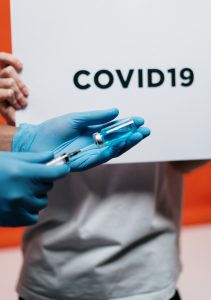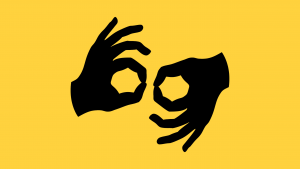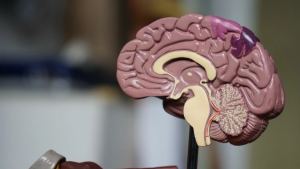PRP FAQ Series: Community Pharmacy

In this series, ex or current Provisionally Registered Pharmacists (PRPs) will share their experiences in respective industries across the pharmacy landscape in Malaysia. This article will be focusing on PRP-ship in community pharmacy.
Let’s be real: before entering pharmacy school, all you knew about pharmacy was from observing community pharmacists. Oh and of course, paracetamol.
Okay, maybe that’s not entirely true for us now due to the internet. But accessibility to the public has certainly, whether directly or indirectly, influenced how the role of pharmacists in society is perceived: these are based on the public’s interactions with community pharmacists.

Sadly there are stereotypes of community pharmacists, among the most prevalent is that they are merely salesmen and saleswomen. Business is no doubt important for survival. However, community pharmacists are much more than that.
They play a very important role in primary care, often able to correctly direct patients to the necessary help if needed, are firm advocates of healthy lifestyles, and act as a safe community point of contact for a diverse range of needs.
In recent years, more and more community pharmacies are welcoming PRPs into their ranks, actively guiding juniors like you to one day become a great community pharmacist.
If you are interested in pursuing PRP-ship in community pharmacy, we hope these frequently asked questions (FAQs) will provide a helpful overview of PRP life in community pharmacies.
The Basics
1. What is the process like to go from Provisionally Registered Pharmacist (PRP) to Fully Registered Pharmacist (FRP) in Community Pharmacy?
Based on Guidelines on Liberalisation of PRP Training in Private Sector for Graduates of Pharmacy Degree Programme, incoming PRPs to private sector shall undergo one (1) year training as a PRP in Pharmacy Board of Malaysia’s recognized private sector premises followed by service as an FRP as stated in the contract agreement of both parties.
The term ship of FRP depends on different institutions. Most finish within a year.
Similar to all other sectors, if everything goes well, the PRP-ship will also take around a year to complete.
After fulfilling all the requirements, you will get your FRP license and become a Fully Registered Pharmacist.
2. What are the community pharmacies that accept PRPs?
You may check out the list of selected community pharmacies (chain or independent) who are recognized by the Pharmacy Board of Malaysia (listed on Pharmaceutical Services Programme website).
It is important to note that different companies have different intakes depending on vacancies available.
There are certain companies (especially chain pharmacies) who do not have a fixed intake period so you can always send in your CV when you are ready.
The Application

1. Which should I choose, independent or chain pharmacy?
Both settings present different learning opportunities, pros and cons. Ultimately, it is up to your priorities and learning goals.
While the role of community pharmacists are pretty similar in both settings, you may be able to learn more on how to set up a pharmacy and be exposed to operational management if you choose independent pharmacies.
On the contrary, chain pharmacies usually have an established system and standard operating procedure which are set when it comes to daily operational tasks.
2. What is the application process like?

The Work
1. What are some things that I should prepare before my first day at work?

Depending on the setting, you may be invited to the Head Office (if you have chosen a chain pharmacy) for induction training.
It is important as you would be able to understand the company’s background, direction and focus. You would be able to learn some of the existing systems in that company which will be really useful for your day-to-day tasks.
On top of that, here is a list of things every PRP should ideally have ready before the first day, or at least during the first week:
Must-Haves:
- A positive and humble attitude
- Appropriate working attire
- Comfortable yet formal shoes (as you most likely need to walk around throughout the day!)
- Calculator (in case you need to calculate the dosage)
- Passport photos & Documents that need to be submitted
- Pharmacy-related apps (e.g. MIMS, Micromedex, Renal Dose, Drug Counselling, Lexicomp, UpToDate)
- Notebook especially when you are attending the training
- Logbook (Do check with the respective person-in-charge whether to print the logbooks first before the first day)
You will be given (Do check with your respective person-in-charge / preceptor on the arrangements if possible):
- Whitecoat
- Nametag
2. What is the secret sauce to thrive as a PRP in the community pharmacy?

Bottom Line
If you have chosen to embark on a journey as a provisional registered pharmacist at a community pharmacy, you will without a doubt receive early and precious exposure to the essence of helping a community.
You will also have hands-on experience in business and personnel management. In this setting, you are trained to make quick decisions at the point of care of the patient (such as suggesting treatments for minor ailments or recommending the best supplement you deem fit), which is an exciting learning curve!
At the end of the day, the decision is in your hands. No matter where you decide to begin this exciting journey in becoming a fully registered pharmacist, remember, we are the end of the swiss cheese. It is our role to ensure that the Rakyat receive the best pharmacy care and we are the last line of defence in preventing medication error!
This article is contributed by Yi Ling (former PRP in a community pharmacy, currently working as a Senior Pharmacy Practice Executive in a chain pharmacy).
The opinions expressed in the article are the writers’ own and do not reflect the view of MPS YPC.
Cover photo: emerj.com

Ng Yi Ling is currently the community pharmacist CUM Senior Pharmacy Practice Executive in Caring Pharmacy. She completed her Provisional Registered Pharmacist (PRP) in community pharmacy settings. She is also the event director of the Malaysian Community Pharmacy Business Forum (MyCPBF), a flagship event under MPS Young Pharmacist Chapter initiatives.













